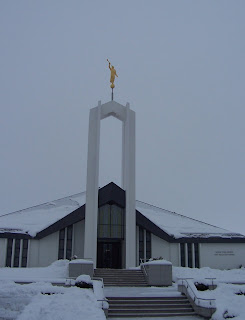On Monday, January 26, 2011 we left Prague and traveled to Dresden, Germany. Dresden was founded around 1206. On 13 February 1945 Dresden was almost completely leveled--not much was left standing. There has been an exhaustive effort of rebuilding and restoring the historic buildings.
As we first entered the city we focused on this building. We were very interested in it because the statue on top resembled the Angel Moroni from a distance--it is called the Golden Man--the building is the Rathause--or City Hall.
 We stayed at this hotel--the Radisson--it was very comfortable.
We stayed at this hotel--the Radisson--it was very comfortable.
Frauenkirche (Church of our Lady)
This is a Protestant Cathedral and was built in 1726. The statue in front of the building is of Martin Luther.
During the bombing the cathedral took a direct hit and was a huge pile of rubble for the next 45 years. After Communism ended the city and other people throughout the world donated money and the building was reconstructed. By carefully following the original plans, carefully documenting the stones and other artifacts from the building they were able to use about 45% of the original stones and artifacts. The church opened again in honor of the 800th anniversary of the city.
 The statue of Martin Luther was almost completely destroyed also.
The statue of Martin Luther was almost completely destroyed also.They documented 7,000 pieces and were able to use 3,500 pieces of the original building. The only wall left standing after the bombing is the dark part of the stone in this picture. The rest of the church had to be completely rebuilt. This building is one of the greatest pieces of architecture in all of Europe.
We especially liked the inside of this building. All of the other cathedrals that we have visited throughout Germany are all very cold and dark inside--this one is very light and is decorated with pinks and gold. It is very beautiful. This is also the only cathedral we have visited that they actually heat the inside.

Dresden sits on the Elbe River. The bridge is the Augustus Bridge.

 In the background is the Hofkirche (Catholic Court Chapel)
In the background is the Hofkirche (Catholic Court Chapel)

On the left is the former Royal Palace.

The Royal Palace

 In the background is the Hofkirche (Catholic Court Chapel)
In the background is the Hofkirche (Catholic Court Chapel)On the outside of this cathedral there are at least 78 statues that are over 10 feet tall.

On the left is the former Royal Palace.

The Royal Palace
One of the first permanent theaters north of the Alps. It was built in 1678. It was remodeled in 1841 and then restored after the bombing.

Picture of the Catholic Church--picture was taken from the bridge.
 In the courtyard of the Zwinger
In the courtyard of the Zwinger

Crown Tower of the Zwinger
 Karen, in the courtyard of the Zwinger
Karen, in the courtyard of the Zwinger

We found an ice-skating rink in a section of the palace. The Christmas tree was still up and we were especially interested in the penquin ice-skating trainers so that children could hold onto them and learn to skate.


Picture of the Catholic Church--picture was taken from the bridge.
Zwinger--The king originally designed this group of buildings. It was first built in 1709. It was also leveled during the bombing and has been rebuilt to look like the original. It is a huge complex that today houses very family art collections, porcelain collections and a historical museum of a collection of weapons that were used by Saxon Princes.
 In the courtyard of the Zwinger
In the courtyard of the Zwinger
Crown Tower of the Zwinger
 Karen, in the courtyard of the Zwinger
Karen, in the courtyard of the Zwinger
We found an ice-skating rink in a section of the palace. The Christmas tree was still up and we were especially interested in the penquin ice-skating trainers so that children could hold onto them and learn to skate.

January 27, 2011 we left and traveled to Freiberg to attend the temple. The closer we got to Freiberg the more snow there was.  Freiberg Temple
Freiberg Temple
 Freiberg Temple
Freiberg Temple
















No comments:
Post a Comment